It’s a wonderful life? The darker side of James Stewart’s screen persona
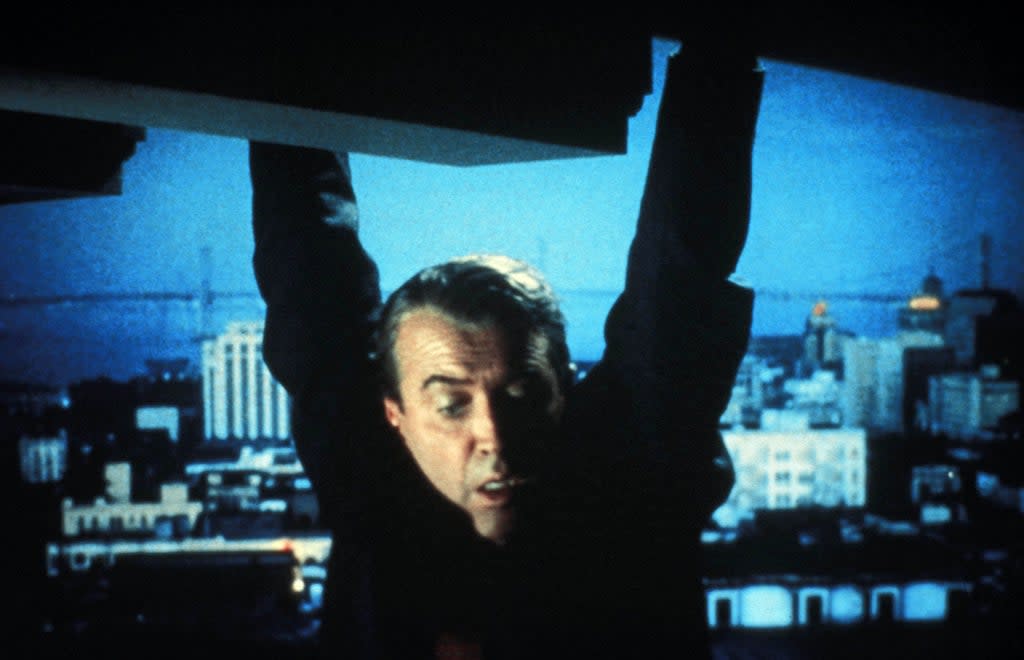
Who is that crazy alcoholic talking to the 6ft 3in rabbit? What is eating away at that man whose face is contorted in hatred and anger as he drags the corpse of a dead enemy over the rocks? Shouldn’t that nervous and sexually neurotic former detective who can’t stand heights be seeing a shrink? Why is that voyeur with his leg in plaster staring through the long lens of his camera at the women in the apartment opposite? Isn’t it time that the despairing, suicidal small-town businessman got a grip on himself?
None of these are questions movie fans expect to be asking about James Stewart (1908-1997), who remains among the best-loved stars in all of Hollywood history. The paradox, though, is that Stewart so frequently played characters with damaged and twisted natures.
The Jimmy Stewart Museum in his hometown – Indiana, Pennsylvania, where Stewart’s family had a hardware store – last year celebrated its 25th anniversary. Its description of Stewart is revealing. The museum proclaims on its website that he is “the movies’ quintessential everyman, a uniquely all-American performer who parlayed his easygoing persona into one of the most successful and enduring careers in film history”.
Stewart, the museum reminds us, was a military hero, a family man who left “a legacy of honesty, hard work, and strong values”.
“He’s like our hometown boy, our hometown hero,” the museum’s president-executive director Janie McKirgan tells me. “Jimmy Stewart was the ultimate everyday man.”
Stewart will be back on UK cinema screens next month in two of his best-loved films: Ernst Lubitsch’s romantic comedy The Shop Around the Corner (1940), and Frank Capra’s It’s a Wonderful Life (1946). Whether either film shows him as the easygoing American everyman the museum describes is open to question.
In the former, Stewart plays Alfred Kralik, the “first salesman” in a leather and gift shop in Budapest. Alfred is in the midst of a correspondence with a female pen pal. They have a perfect rapport but have never met. When Klara (Margaret Sullivan) becomes his co-worker, they can’t stand each other. Little do they realise they are the ones writing such lush and romantic letters to each other every day.
In the film, Stewart is dapper, engaging and very funny. Even here, though, he is not as bland as his wholesome reputation suggests. His performance is effective because he captures the character’s awkwardness and aloofness, as well as his amiability. Stewart hints at Alfred’s sexual repression and frustration, as well as his attraction to Klara.
It’s a Wonderful Life, meanwhile, has that terrifying Christmas Eve sequence in which Stewart’s character George Bailey realises that he is worth more “dead than alive”. With his business about to collapse, he snaps at his family and begs his arch-enemy Henry Potter (Lionel Barrymore) for a loan, which isn’t given. Stewart’s despair and self-pity are terrible to behold. There is nothing easygoing about him as he drunkenly prepares to kill himself for his life insurance. The film may end on a heartwarming note, but before Clarence the angel intervenes, Stewart takes the audience to some very dark places.
During the film’s bleaker scenes, you’re likely to feel a similar dismay to that felt by George Bailey’s kids that a character you care about is behaving in such an erratic fashion. That, though, is Stewart’s secret. The tall, bony-faced actor with the drawling voice is so likeable that you trust him regardless of how he acts.
When the actor smashes Dan Duryea’s face into a bar table late on in Anthony Mann’s Western Winchester ’73 (1950), he is showing a level of thuggery that heavies in gangster films of the period might have shirked at. Even here, you give him the benefit of the doubt.
In the film, Stewart’s character, Lin McAdam, is obsessive in his quest for revenge against the brother who betrayed him.
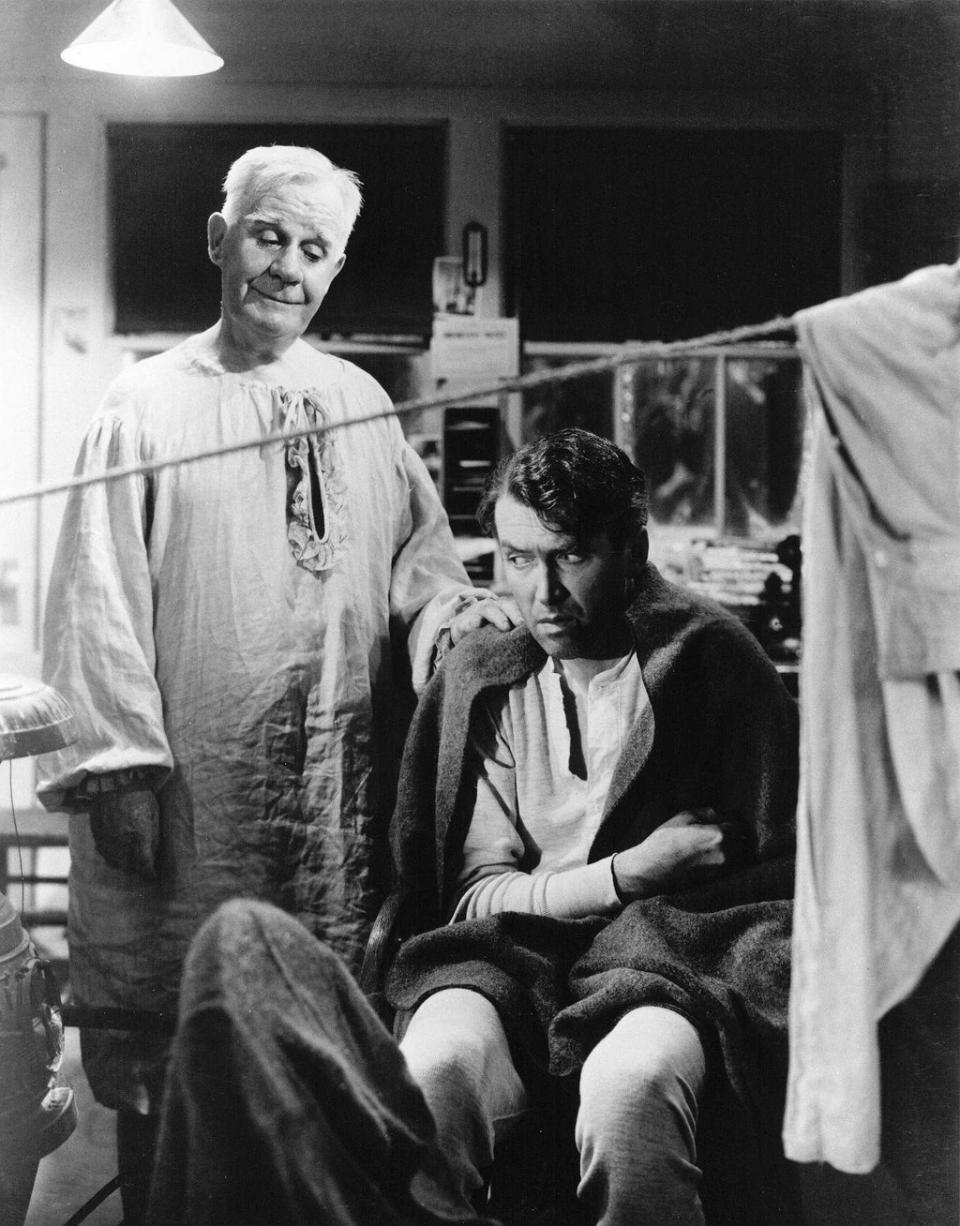
“What happens when the hunt is over?” his friend High Spade (Millard Mitchell) asks him. Lin doesn’t have a proper answer. He is so caught up in his bloodlust that he can’t think beyond it.
Westerns were generally known for their simpleminded morality. However, when Stewart, already into his forties, belatedly embraced the genre, he brought a new psychological complexity to his performances. There were several different reasons for the change in the star’s persona. On the one hand, this was business. No longer young, Stewart was adapting to a changing Hollywood. He didn’t want to be regarded as yesterday’s man or to cling too tightly to the folksy persona that had defined his earlier movies.
“I had to toughen up and I found that in Westerns I could do it and still retain what I was,” he told author Tony Thomas.
Stewart’s toughness wasn’t just on screen. His agent Lew Wasserman had negotiated him a groundbreaking contract on Winchester ’73, which guaranteed him a share of the profits in return for a lower upfront fee. He made a fortune as a result.
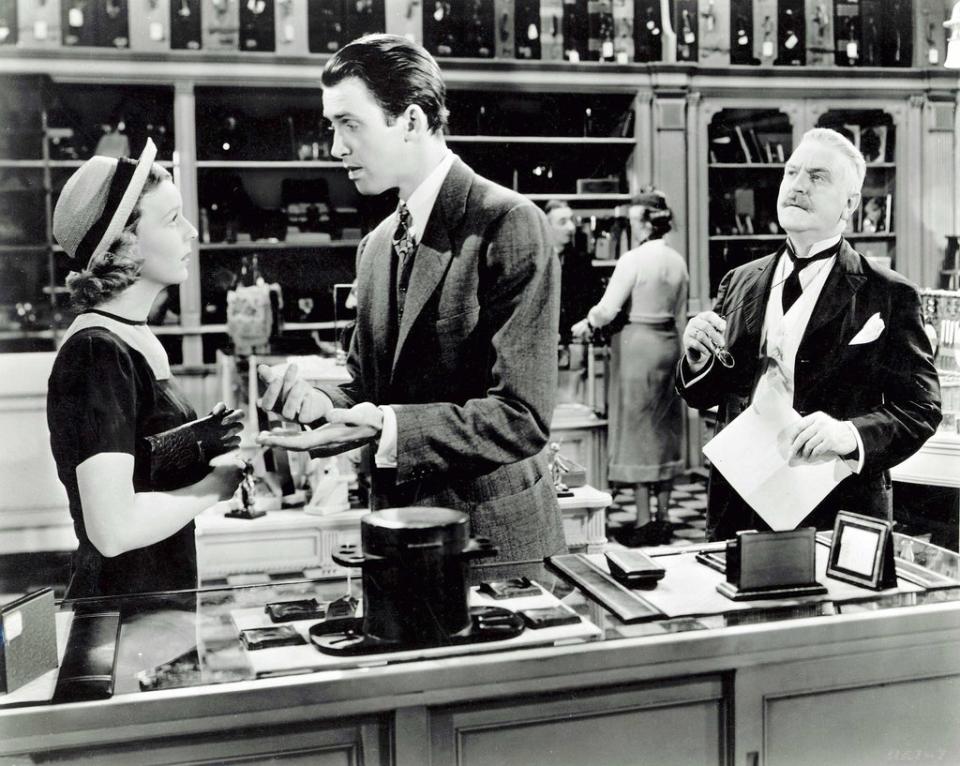
There was also the sense that in his Westerns with Mann, Stewart was still working through the traumas he had endured during the war. He had served as a bomber pilot, based at RAF Tibenham in Norfolk, from where he had commanded the 445th Bomb Group, flying a series of increasingly dangerous missions over Nazi Germany. He later admitted to the terror he felt.
“Fear is an insidious and deadly thing. It can warp judgement, freeze reflexes, breed mistakes. And worse, it’s contagious.”
In his 2016 book, Mission: Jimmy Stewart and the Fight for Europe, author Robert Matzen argues that the actor who returned to Hollywood after the war was still suffering from severe PTSD.
“The war had changed Jim down to the molecular level. He could never begin to articulate what those four and a half years, including 15 months in combat, had done to him. One thing he could do was continue to express a bit of it on screen,” Matzen writes.
Watch Stewart as the suicidal George Bailey, or in the opening scenes of Alfred Hitchcock’s Vertigo (1958), desperately holding onto a rooftop ledge, and you’ll see a man expressing true terror. There is nothing feigned about that look of existential dread that consumes his features.
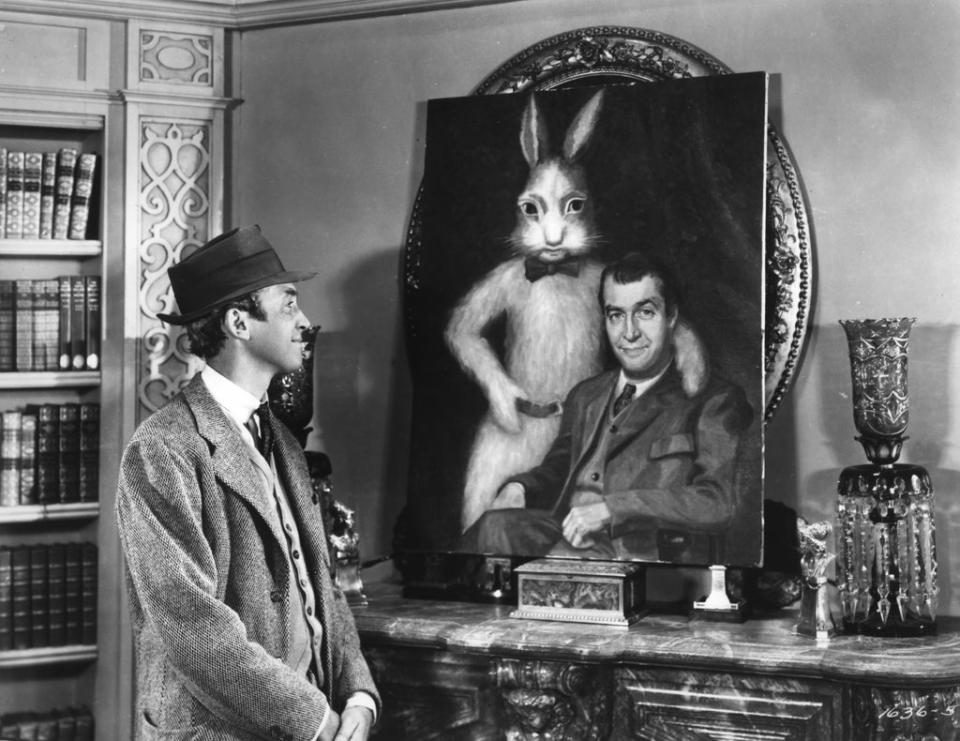
Hitchcock didn’t just draw out Stewart’s primal fears and remorse. He allowed the actor to show his trademark charm. In the four films Hitchcock made with him – Rope, Rear Window, The Man Who Knew Too Much and Vertigo – audiences were sometimes hoodwinked by Stewart’s humour into overlooking the warped and very vulnerable sides of the characters he was playing.
Hitchcock’s biographer Donald Spoto argues that Stewart provided the director with “an alter ego attractive enough to engage the sympathies” of viewers. The director’s obsessions might have seemed repellent if they hadn’t been filtered through a leading character as appealing as Stewart.
Stewart, meanwhile, was seemingly looking to exorcise his own demons. He may have struggled to speak openly about his wartime experiences, but he found it cathartic to play characters with dark and troubling backstories.
Not that Stewart spent his entire post-war career working through the guilt and trauma of his time in the armed forces. Alongside his vengeful, haunted cowboys, he was also cast as baseball stars (The Stratton Story) and jazz musicians (The Glenn Miller Story). He did comedies too. That relaxed demeanour that audiences warmed to in the 1930s hadn’t disappeared altogether.
In fact, that mellow quality often helped Stewart in his most complex movies. Otto Preminger’s Anatomy of a Murder (1959) saw him portray Paul Biegler, a small-town lawyer in a case involving rape and murder. Biegler is the underdog, pitted against the formidable state prosecutor Claude Dancer (George C Scott). Stewart’s performance is laid-back in the extreme. He goes fishing at every spare moment and never gets too perturbed, whatever macabre or sensational twists the court case takes. It is obvious, though, that Biegler’s casual manner is really just a front. He is as driven and desperate to win the case as his adversary, but prefers not to show it.
Stewart was far more skilled and calculating as an actor than fans imagined. John Wayne may have stayed the same from role to role, but Stewart was always changing. He did romantic comedies like The Philadelphia Story (1940), starred in surrealist whimsy like Harvey (1951), in which he shared the screen with the imaginary rabbit, and made his share of crime thrillers.
In his Westerns, he kept on reinventing himself. He was a clean-cut cowboy in Destry Rides Again (1939) but a brooding and very violent one in all those Mann films. He was highly proficient with guns in Winchester ’73, but gave the impression he didn’t know which way to point them, let alone how to shoot them, when he played the greenhorn lawyer out west in John Ford’s The Man Who Shot Liberty Valance (1962).
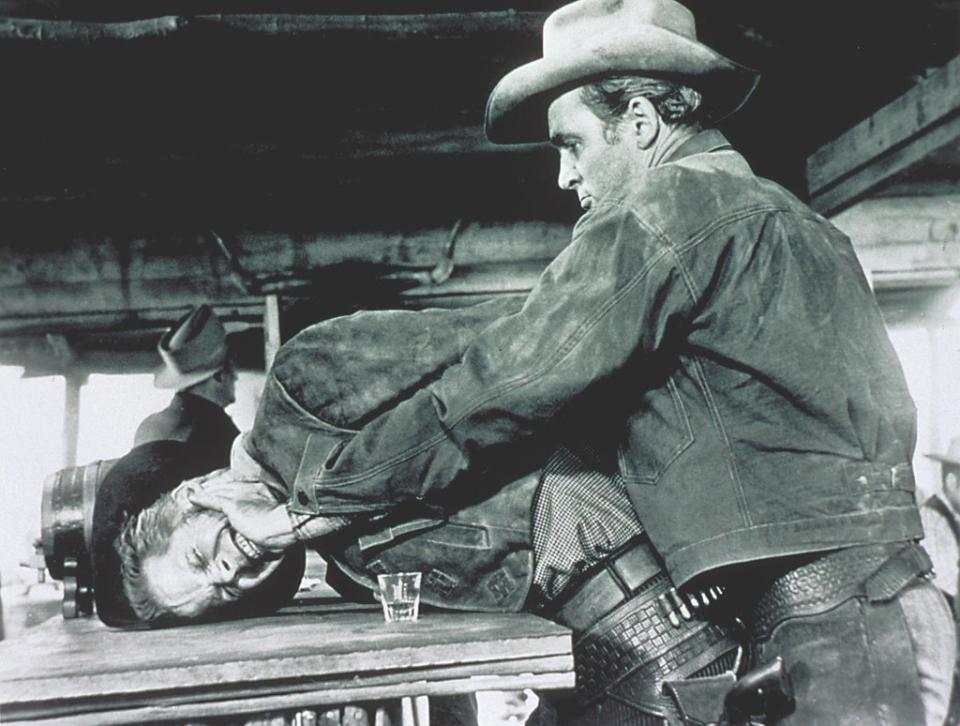
“He took a little bit of himself into every role, and that is why he seemed so authentic,” says the Jimmy Stewart Museum’s McKirgan about his enduring appeal. “He always wanted to treat the audience as customers because he felt he owed them his best performance… you might be a Western fan or a romantic comedy fan or a suspense fan... there is something for everybody in his 80 films. You’ve just got to love him!”
‘The Shop Around the Corner’ is released in selected cinemas in the UK on 3 December. ‘It’s a Wonderful Life’ will also be in selected cinemas next month
Read More
Some Like Him Not: Why Billy Wilder divides opinion
Dressed to kill: Why gangster and fashion films have a lot in common
Licence to change: The challenge of modernising 007 for a post-MeToo, post-Covid world
Ahir Shah’s pandemic jokes fall down when it comes to politics in Dress – review
The five best new books to read this month
Pride and Prejudice* (*Sort Of) is an Austen retelling with bite – review
